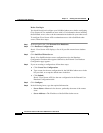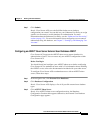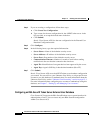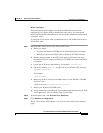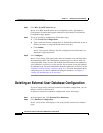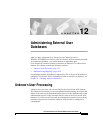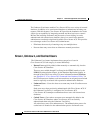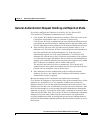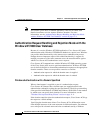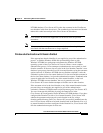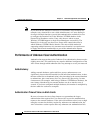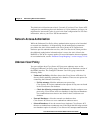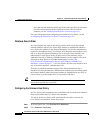
Chapter 12 Administering External User Databases
Unknown User Processing
12-2
Cisco Secure ACS 3.0 for Windows 2000/NT Servers User Guide
78-13751-01, Version 3.0
The Unknown User feature enables Cisco Secure ACS to use a variety of external
databases in addition to its own internal database to authenticate incoming user
requests. With this feature, Cisco Secure ACS provides the foundation for a basic
single sign-on capability by integrating network and host-level access control.
Because the incoming usernames and passwords of users dialing in can be
authenticated with external user databases, there is no need for the network
administrator to maintain a duplicate list within Cisco Secure ACS. This provides
two advantages to the Cisco Secure ACS administrator:
• Eliminates the necessity of entering every user multiple times
• Prevents data-entry errors that are inherent to manual procedures
Known, Unknown, and Cached Users
The Unknown User feature implements three categories of users in
Cisco Secure ACS. Each category is treated differently:
• Known Users explicitly added, either manually or automatically, into the
Cisco Secure ACS database.
These are users added through User Setup in the HTML interface, by the
RDBMS Synchronization feature, by the Database Replication feature, or
through by the CSUtil.exe utility. For more information about CSUtil.exe,
see Appendix E, “Cisco Secure ACS Command-Line Database Utility.” In
the CiscoSecure user database, each user must have an assigned password and
must be explicitly associated with a particular authentication database.
• Unknown Users—Users who have no account entry in the CiscoSecure user
database.
Such users never have previously authenticated with Cisco Secure ACS. If
the Unknown User Policy is configured in Cisco Secure ACS,
Cisco Secure ACS attempts to authenticate these users with external user
databases.
• Cached Users—Users whose accounts were automatically added to the
Cisco Secure ACS database when Cisco Secure ACS successfully
authenticated them using the Unknown User Policy.
All cached users were once unknown users. The authentication process for
cached users is identical to the authentication process for known users.



